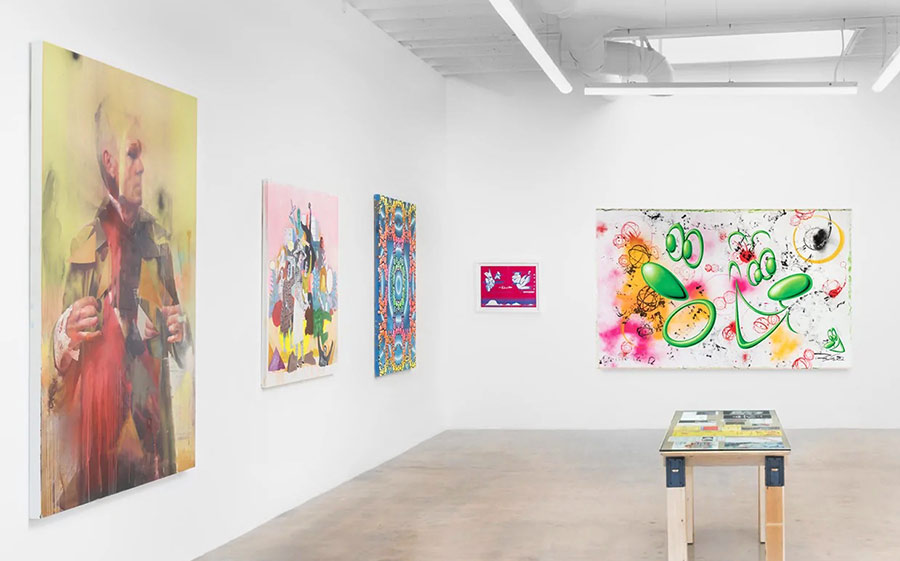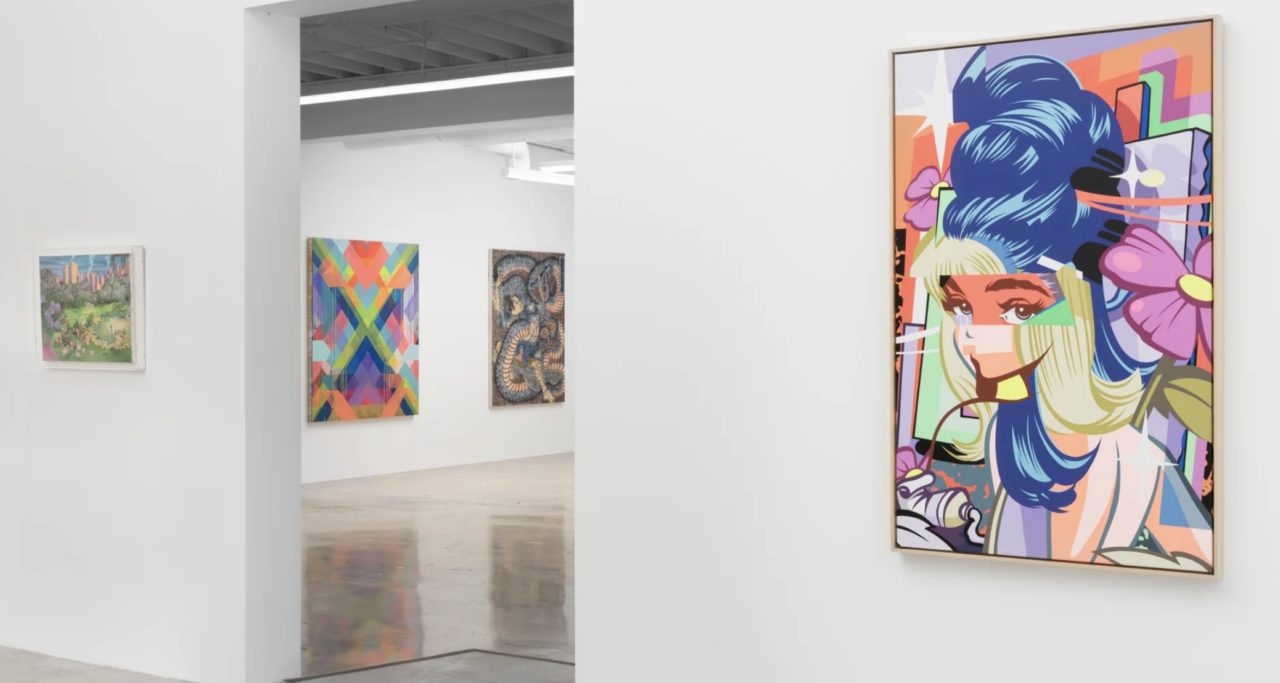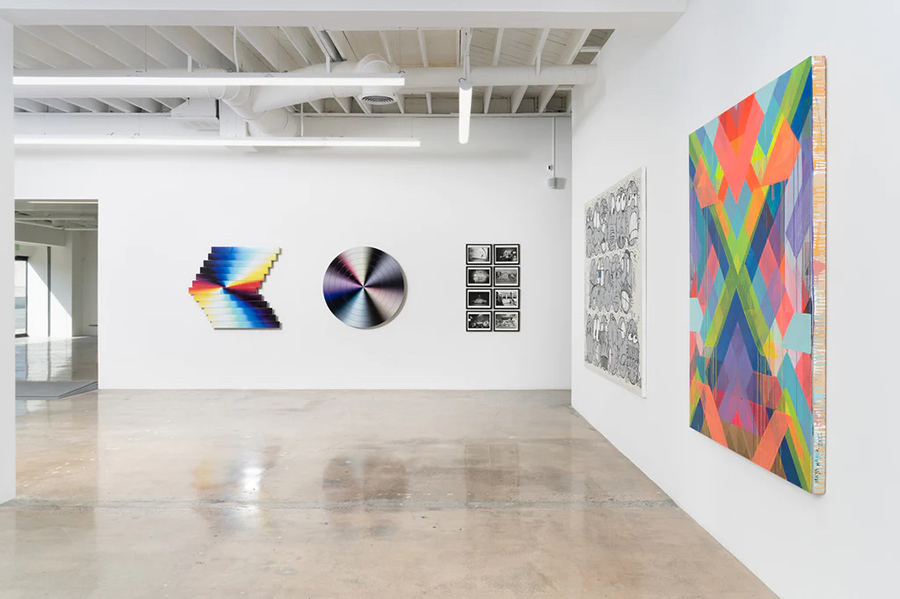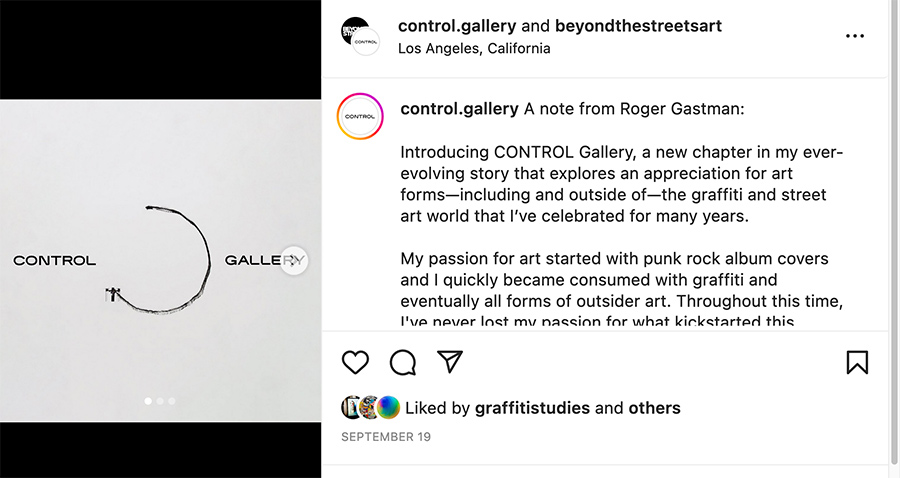“Here we saw men and women writing on walls for thousands of years; centuries later that led to men and women writing on subway trains, tagging highway overpasses and tunnels, on and on. And though it feels like cheating, the existence of cave painting proves there is an eternal and evolutionary impulse to communicate, to leave a mark in the form of art on walls to be read and deciphered.”
~ Sean Corcoran, Roger Gastman and Evan Pricco in Post Graffiti
These are the origination stories that help us to conceptually corral a dispersed, unmarshalled graffiti and street art scene loosed in public space since approximately the 1960s. For such an unbridled and wooly world of rebellion and free expression, few could have predicted that, eventually, it would evolve and expand into so many white box gallery environments. Yet as early as the 1970s and the artist collective of train writers UGA (“United Graffiti Artists”) and a show at Razor Gallery in Soho, enterprising visionaries were bringing aerosol art into the gallery.

Fifty years later and debuting as a space called Control Gallery, this uncontrolled organic undercover scene again repositions as artworks defined by the parameters of the canvas. The brainchild of graffiti historian and street culture impresario Roger Gastman, the LA space is the latest expression of his growing brand Beyond The Streets. With a theme demarking the psychological break from simple mark-making, Gastman and gallery director Dante Parel take the big umbrella approach to the artists they represent – each exemplifying one or more aspects of the move toward contemporary over the last five decades.

The pristine, gently post-industrial white space serves as a stage for canvasses and sculptures that may seem unrelated to one another stylistically, yet their backstories weave together fundamentally. Here’s OG 1970s NYC train writer CRASH in the same show with the similarly pop-enlightened Pose, whose own history on Chicago streets two decades later was also formative for his deconstructed imagery for gallery viewing. The expressions differ, but their inspirations are arguably fused at the root.

Included in this mix is the Argentinian-Spanish technologist and kinetic wizard Felipe Pantone whose growing collection of color spectrum sculptures is somehow rooted in the 1990s digital glitches of his boyhood as well as his teen graffiti writing into the 00s. Seemingly unrelated is the romantic military masculinity of the figurative paintings by Cork-born Connor Harrington, whose dreamlike illusions are still as formal as his fine art training in university. An “an Irish street/graffiti artist” according to Wikipedia, you are also welcome to call him post-graffiti here at Control.
As we continue to grapple with the terms, the conditions, the definitions for a constellation of descendants from graffiti, perhaps the fairest pronouncement would be, with gratitude to the originators, that these works are indeed post-graffiti. No longer recognizable as part of the graffiti writing family of codes and conventions, they nonetheless contain the source code of the sub-culture that eventually became the contemporary culture.

Artists include: Blake Kunin, CHITO, Conor Harrington, CRASH, Eric HAZE, Felipe Pantone, FUTURA2000, Gregory Rick, Katsu, Kenny Scharf, LADY PINK, Madsaki, Maya Hayuk, Nehemiah Cisneros, Ozzie Jaurez, Othelo Gervacio, Paul Flores, Paul Insect, POSE, Timothy Curtis, and Todd James.
POST GRAFFITI runs through October 22, 2022.
Address
434 N La Brea Ave.
Los Angeles, CA 90036
 BROOKLYN STREET ART LOVES YOU MORE EVERY DAY
BROOKLYN STREET ART LOVES YOU MORE EVERY DAY










